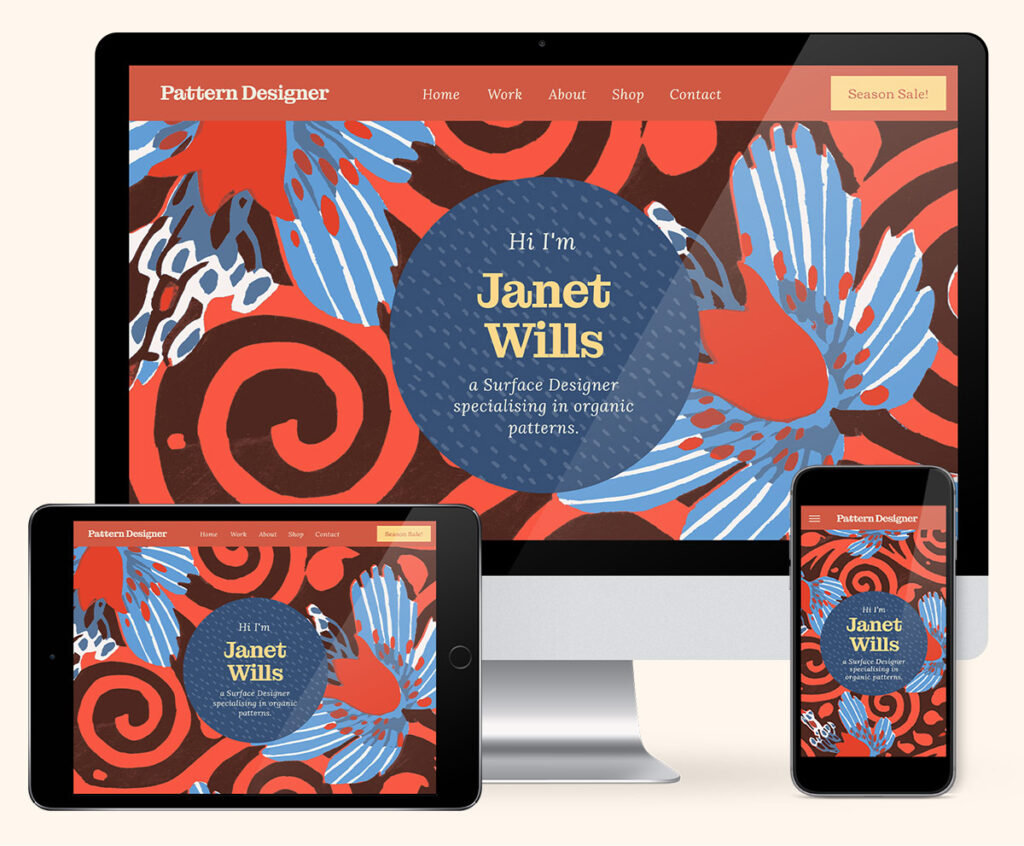grab our FREE
‘Do’s & Don’ts of what to add to your website’ Guide.
‘Do’s & Don’ts of what to add to your website’ Guide.
emails with additional helpful content.
Hi, we're so glad you found us.
We love helping creatives like you finally have the website you’ve always wanted.
few simple steps
Follow us
Should you use Red as your Branding Colour?
Red is one of the most conflicting emotional colours as it represents both passion and danger. But with such contrasting elements, how do you know whether you Should use Red as your Branding Colour?
We have developed a three-part system that, takes a deep dive into Red’s meaning, varieties and how to use this information in your branding.
Are you ready for Red? Let’s go.
Before we start – missed a part of our Branding Colour Series? Catch up below.
- 1. Should you use Blue as your Branding Colour?
- 2. Should you use Red as your Branding Colour? (this is the blog you’re reading)
- 3. Should you use Yellow as your Branding Colour?
- 4. Should you use Green as your Branding Colour?
- 5. Should you use Pink as your Branding Colour?
- 6. Should you use Orange as your Branding Colour?
- 7. Should you use Purple as your Branding Colour?
- 8. Should you use Grey as your Branding Colour?
- 9. Should you use White as your Branding Colour?
- 10. Should you use Black as your Branding Colour?
- 11. Should you use Beige as your Branding Colour?
- 12. Should you use Brown as your Branding Colour?
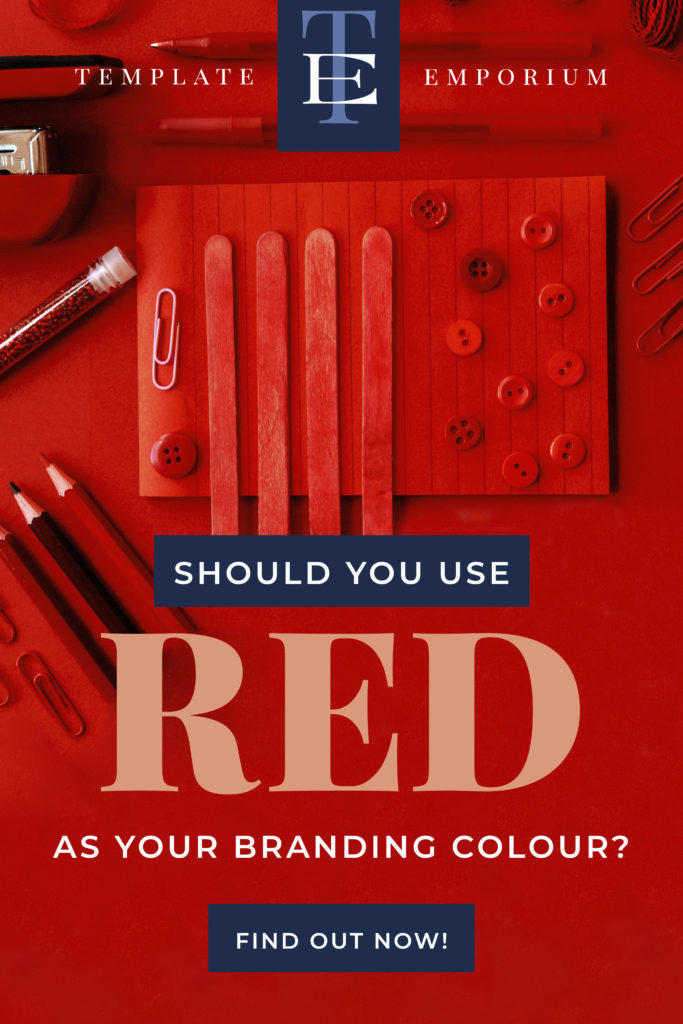
Want to start using Red as your Branding Colour now?
Download our FREE Guide
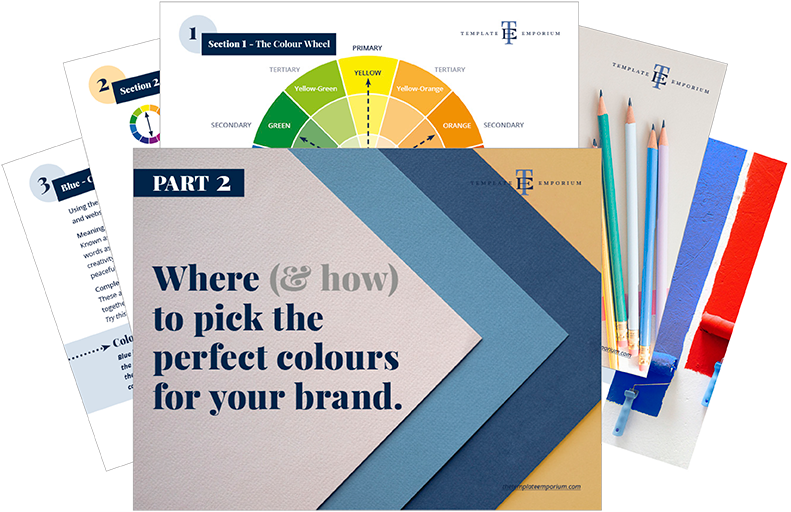
Here’s What We’ll Cover
MEANING OF RED
The Psychological Meaning of Red
Meaning of Red to you
Red in Business
VARIETIES OF RED
Candy Apple Red to Rosewood, we share our favourite Reds
Red & The Colour Wheel
Colours that go with Red
RED IN BRANDING
Matching to the Tone of your Business
Picking the Perfect Palette with Red
When not to use Red in your Branding
Should you use Red as your Branding Colour?
1. Meaning of Red
The Psychological Meaning
Red, according to a survey conducted by YouGov is considered the second most popular colour in the world. (Sorry Red, Blue won number 1!).
The reason behind this could be that you would be hard-pressed not to encounter seeing red every day. It’s in some of our favourite foods, from pizza to strawberries. Then to the brake light on your car as you come to a halt at the red traffic light.
But when it comes to discovering the psychological meaning of Red, it varies from feelings of danger, love, anger, passion, desire and power.
All of this may seem a little contradictory. But we believe it is based more on the shade of Red, rather than the colour itself.
To make it a little easier, we’ve created an icon guide below and broken it into Light, Bright and Dark Red.
Original unedited icons from the Noun Project
Light Red Meaning
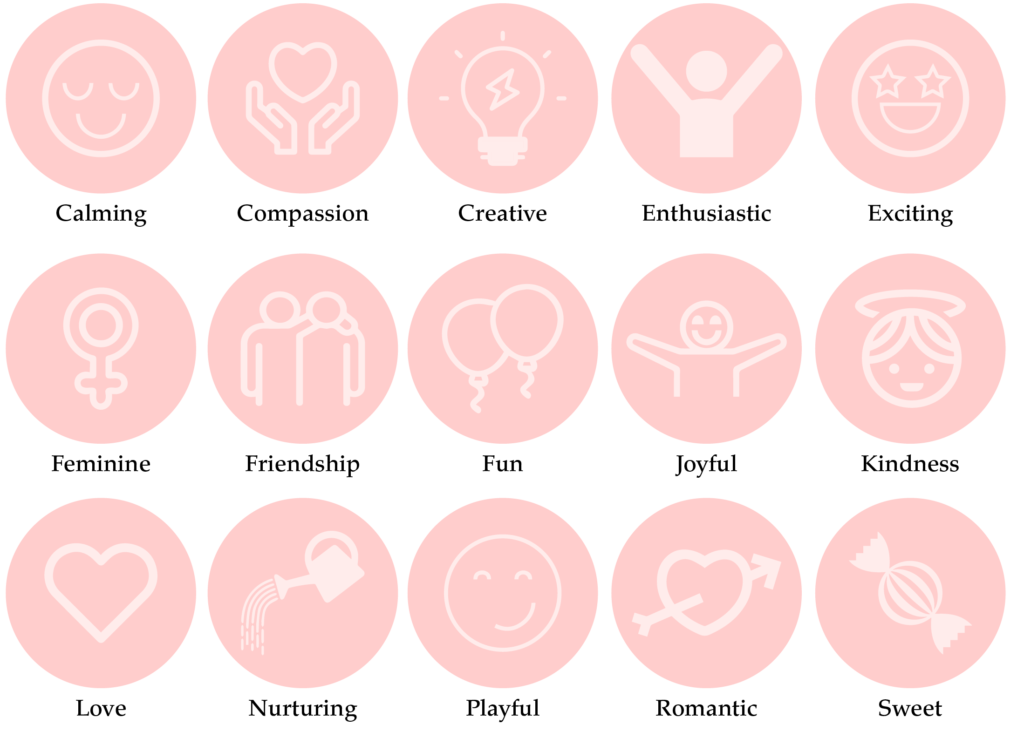
Bright Red Meaning
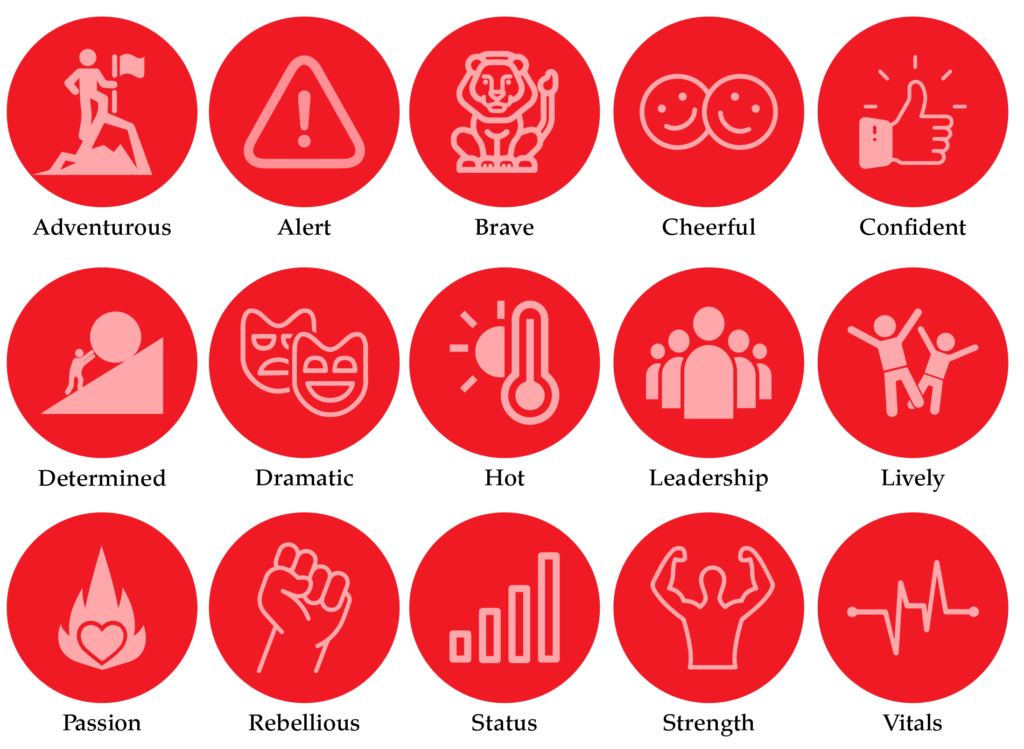
Dark Red Meaning
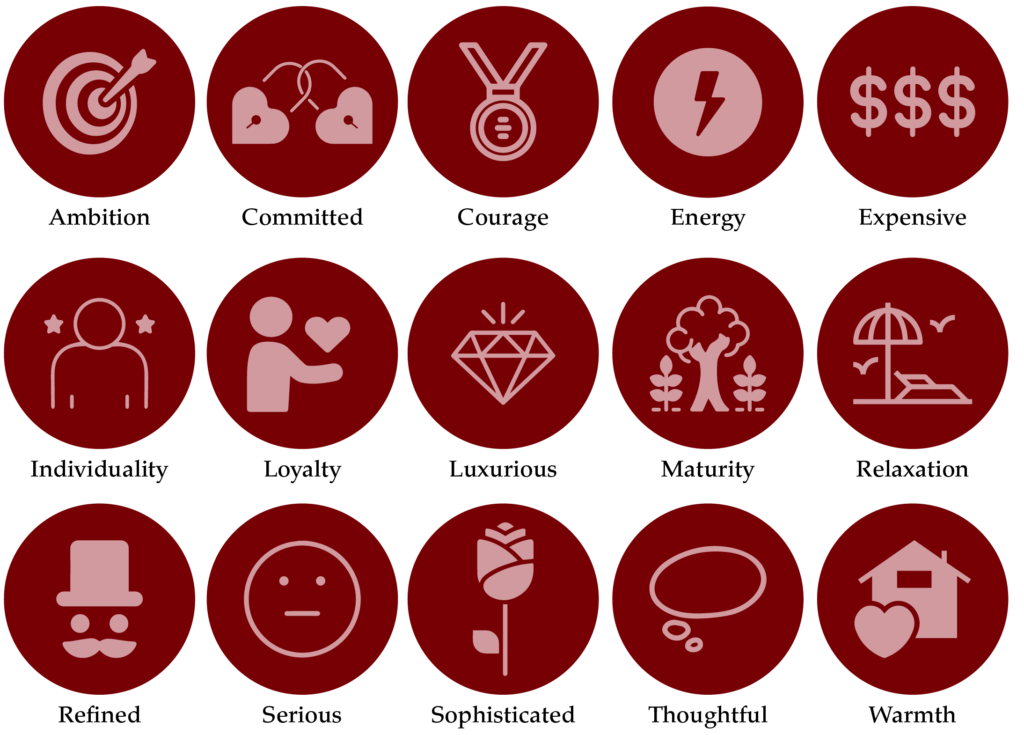
Want a Red Branded Website?
If you love Red, we have the perfect website template for you. Our “Pattern Design” Template combines the perfect pairing of Red and Blue to create the ultimate Red lover’s website.
Created exclusively for the Showit platform, now you can showcase your collection of designs alongside your favourite colour.
Meaning of Red to You
If I asked you “Do you like Red?” how would you answer? Is it one of your favourite colours or is too bold and daring for you?
Any experiences or memories you’ve had with Red will help determine how you feel about it.
Maybe it reminds you of the joy of Christmas or love, or that your favourite sporting team wears it. In this case, you’re probably a fan.
We work with a lot of personal brands and, if you’re one too, you need to find the balance between the colours you like and the ones that will attract your ideal audience.
Look at the icons above and pick which words sum up the way you feel about Red or the way you want your business to be perceived. This will be a great indication of the shade of Red that’s right for you.
Colour Clues
Every colour makes us feel a certain way. Colour Clues will help you discover new ideas about colours you may have never thought about using in your branding.
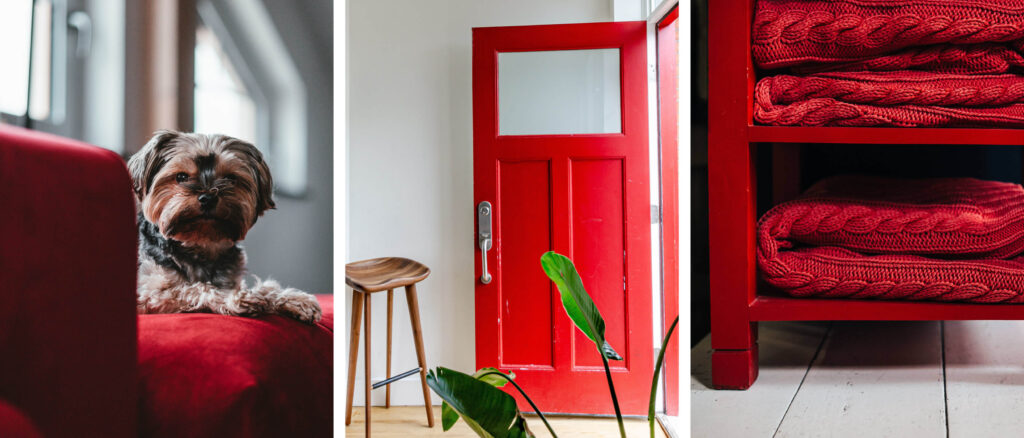
Maybe you have a perfect shade of red lipstick that you love or have introduced a pop of red in your decoration these are, all Colour Clues to determine how you feel about colour.
Would your ideal client like Red, how would it make them feel?
In Part 1 of our Colour Guide series “How (& where) to pick the perfect colours for your brand.” we explain everything about Colour Clues. Click here to download it – it will be super helpful.
Red in Business
In the corporate world, red is everywhere. From sale signs to online buy now buttons, from walking the red carpet to drinking your favourite soft drink.
Red is also often used in corporate branding to create excitement, grab our attention and (possibly) make us feel hungry! Considering all this, that’s why travel, media, and food and beverage industries favour red in their branding.
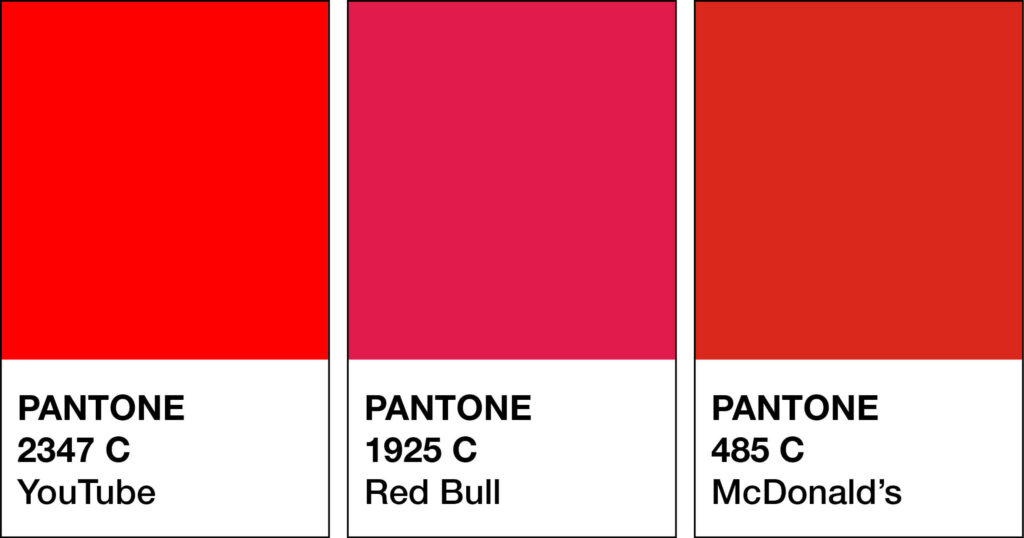
All photos used in this section are from Unsplash.
Airline Travel
According to APEX – The Airline Passenger Experience Association, in airline travel, Red ties as a favourite with Australia/Oceania. In travel, red branding represents adventure, boldness and strength.
Below are a few red branding examples.
Qantas
Air Tahiti
Virgin Australia
And across the world, Red comes in a close second at 28.2% to Blue at 31.6% as the most popular colour. (Sorry Red, Blue did it again!)
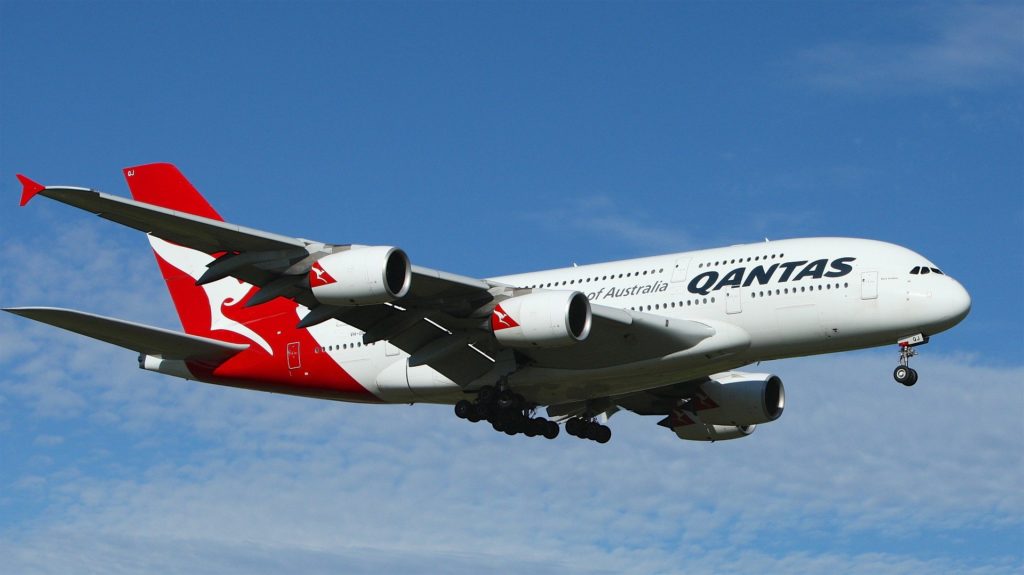
Media
Favoured by various media outlets, using red in their branding grabs our attention, and creates energy, excitement and urgency.
Youtube’s red logo even represents the action to press play now!
Below are a few red branding examples.
CNN
ESPN
YouTube
Netflix
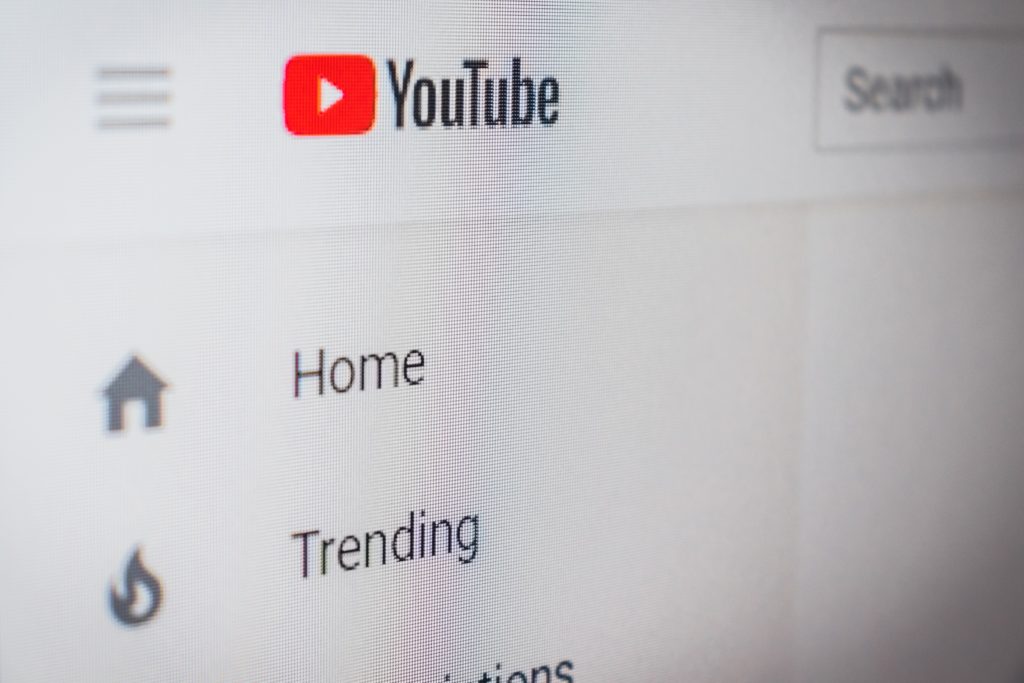
Food and Beverage
Why food and beverages favour red in their branding varies from:
- Making us stop and pay attention to them
- To create excitement
- Nostalgia emotional feelings
- The belief that Red makes us feel hungry
However, Business Insider challenges the hungry theory – It’s more likely that the colour has just become synonymous with fast food over time, perpetuating the idea that red makes you hungry.
Below are a few red branding examples.
McDonald’s
KFC
Coca Cola
Pizza Hut
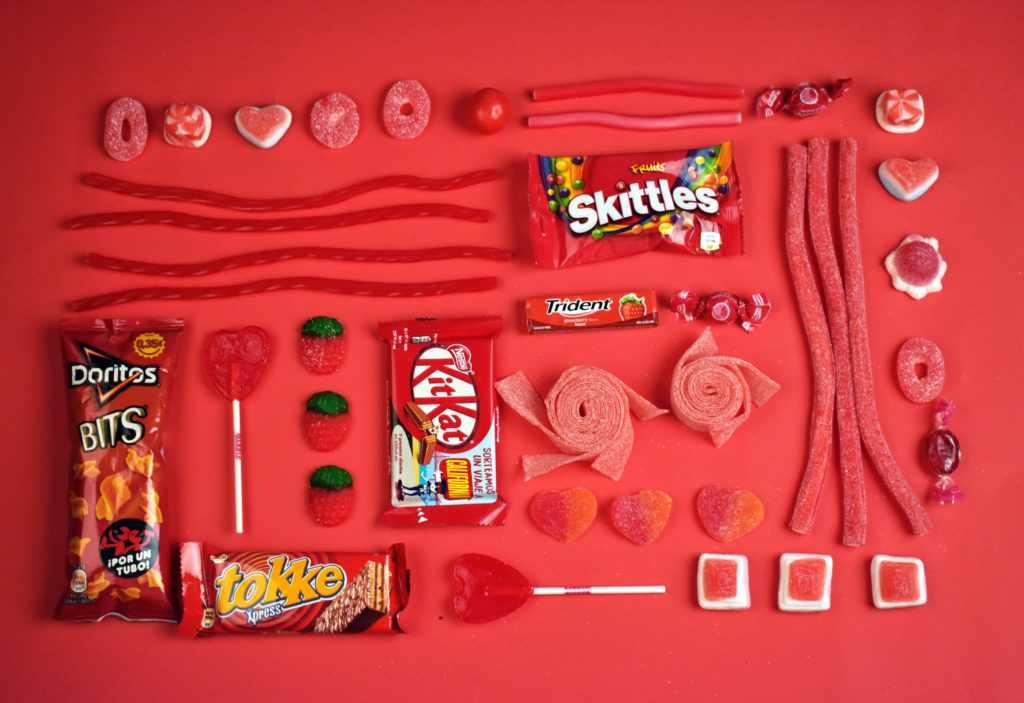
Should you use Red as your Branding Colour?
2. Varieties of Red
Candy Apple Red to Rosewood, we share our favourite Reds
Red is both a WARM & Primary colour. Along with the other two primary colours, (Blue & Yellow), they make up every available colour. Other colours, however, can’t be mixed to make Red.
Many varieties of Red may look similar to each other but have different names. From light to dark Red we’ve compiled a cheat sheet of our favourites below (and included a few you may have never heard of!).
And to make it easy, we added the hex numbers. So you can start using them in your branding today.
Press play on the image below or get all the colour breakdowns in our FREE Guide.
Insider Tips
Tints of Red = Lighter varieties reflect the fun and youthful audience. It feels more approachable and friendly.
Shades of Red = Darker varieties attract a more mature audience. If your business is more traditional, a deeper red such as Burgundy or Cherry is a safer option.
Red & The Colour Wheel
Have you ever wondered how designers “just seem to know” what colours go together? Here’s their secret, they use the Colour Wheel.
There are 12 hues (colours) on the wheel and consist of the:
1. Primary
2. Secondary
3. Tertiary
In this post, we’re focussing on Red which, which is a Primary Colour.
Want Your Own Colour Wheel? Get it now in our FREE Guide
Red & Monochromatic
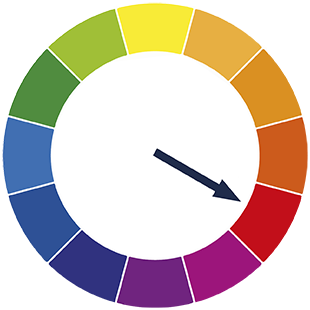
Monochromatic refers to using one colour only.
Take your one MAIN colour Red and add in light and dark variations.
Using one hue (Red) and adding increasing amounts of:
1. White creates a tint. E.g. Pink.
2. Grey creates a tone. E.g. Garnet
3. Black creates a shade. E.g. Wine.
This simple colour scheme will keep your palette looking clean and fresh and, because it uses only a single hue, it has a soothing effect.
Red & Complimentary Colours
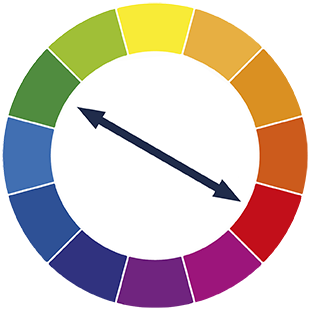
Complimentary refers to the use of two colours.
These are colours that are opposite each other on the colour wheel.
When used together, they bring out the best in each other.
Using your MAIN colour Red, with its opposite Green, will create contrast and make the colours look brighter and more vibrant.
Insider Tip
Use the complimentary colour green in small amounts so it becomes more of a pop of added colour or an accent.
To avoid them overpowering each other (or looking “too Christmasy”), mix in tints, tones and shades. If you made the Green a lighter shade, it would fade back allowing, the Red to come forward.
Red & Analogous Colours

Analogous refers to the use of three colours.
These are any three colours that are side-by-side on the colour wheel. Think of them as colour neighbours.
Using your MAIN colour Red, find the two similar supporting colours sitting next to each other.
Red-Orange + Orange is similar. Which helps convey a low-contrast, friendly, harmonious mood and will appear easier on the eye.
Red & Split Complimentary Colours
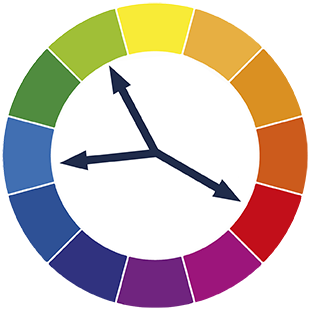
Split Complimentary is the use of two colours.
This is using a base colour and the two colours on each side of its complement.
When your MAIN colour is Red, its complementary colour is Green. The two colours on each side of the green are Yellow-Green and Blue-Green.
A combination like this creates a low-contrast palette of Analogous colours. And the opposite colour gives a pop of colour.
Insider Tip
This time, we’re going to do the opposite of what we did with the complementary colour palette and the MAIN colour Red would be used as the Accent.
Colours that go with Red
Red always stands out and needs to be heard. From a flashing red siren on a red fire truck to a red stop sign and traffic light that demands you halt.
You would think mixing it with other colours would be too hard to control, but that’s not the case. Let’s see who Red can work well with.
Blending Reds

As discussed earlier, a monochromatic palette refers to using one colour.
We love combining Red with Red because not only does it elevate the look, but the multiple shades of Red create harmony together.
Try adding Light and Dark variations together.
The lighter shade will soften, while the darker one will be the highlight.
For an unexpected Neutral, Red + Camel rather than Red + White or Black can help elevate the look and make it feel expensive.
Red Colour Combinations

Red & Blue
These powerful pairs make a popular combination. And the reason why is due to them being Split Complementary colours on the colour wheel.
Poppy + Cyan
Cherry Red + Azure
Tomato Red + Cobalt
Ruby Red + Teal
Claret + Steel Blue
Red & Black
All tones of Red and Black combine well together and create a classic pairing.
Cherry Red + Charcoal
Tomato Red + Dove Grey
Burgundy + Black
Raspberry Red + Black
Crimson + Black
Red & Pink
Being a tint of red, this has become a favourite colour combination. This bright, fun pairing makes you feel good!
Bright Red + Magenta
Fire Engine Red + Hot Pink
Rosy Red + Baby Pink
Raspberry + Maroon
Burgundy + Dusty Pink
Red & Green
As complementary (opposite each other on the colour wheel) colours, this combination always works well.
Red + Army Green
Cherry + Sage
Tomato Red + Mint green
Candy Apple + Forest
Scarlet + Khaki
Red & Brown
This colour scheme works due to Red & Analogous Colours. Brown is not on the colour wheel. It is, however, a shade of orange and one of its neighbouring colours is Red.
Burgundy + Brown
Red + Camel
Scarlet + Bronze
Sangria + Chocolate
Currant + Chestnut
Red & Yellow
These colours work well together because they are both WARM hues (colours).
Primary Red + Yellow
Red + Mustard Yellow
Cherry Red + Pale-Yellow
Red + Marigold
Ruby + Lemon
Want more Red colour combination ideas? Click the image below.
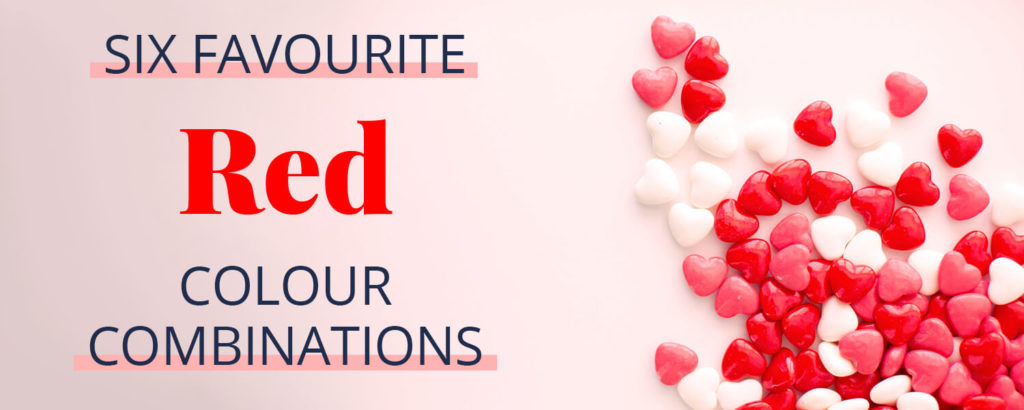
Should you use Red as your Branding Colour?
3. Red in Branding
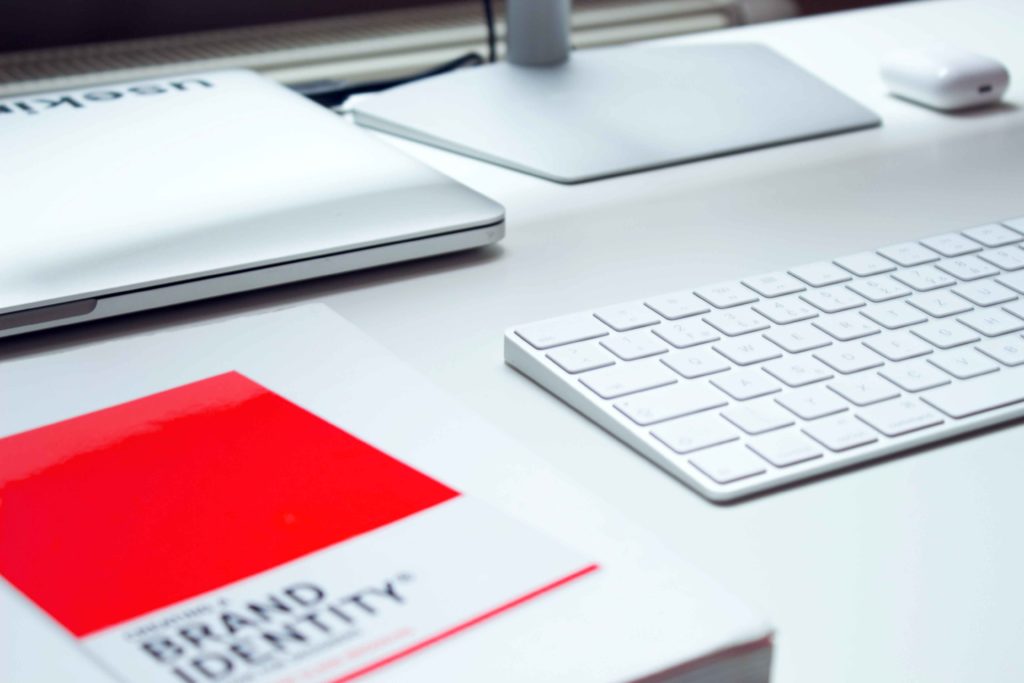
Matching to the Tone of Your Business
Whether your business is traditional or modern Red can work for you.
If you’re leaning towards traditional, avoid bright reds and go for darker tones such as Burgundy, Rosewood or Wine.
A modern style business can make a statement using bright Fire-Engine Red mixed with light tones such as Pink or Magenta.
If using red this way feels too much, try using it as an accent colour.
A red CTA button on your website will demand attention and, your customers will know exactly what they need to do.
As discussed earlier, we break Red into three options, light, bright and dark. Use this as a guide to help you pick the right shade of red for your branding.
For a visual reference of the list below, Click Here.
Light Red
Calming, compassion, creativity, enthusiasm, excitement, femininity, friendship, fun, joy, kindness, love, nurturing, playful, romantic, and sweet.
Bright Red
Adventurous, alert, brave, cheerful, confident, determined, dramatic, hot, leadership, lively, passionate, rebellious, status, strength, vitals.
Dark Red
Ambition, commitment, courage, energy, expense, individuality, loyalty, luxury, maturity, relaxation, refined, serious, sophisticated, thoughtful, and warmth.
Picking the Perfect Palette with Red
Our 5-step Perfect Palette Process
When choosing a Branding Colour Palette, we always follow this process.
Prefer a download version? Find it in our free guide.
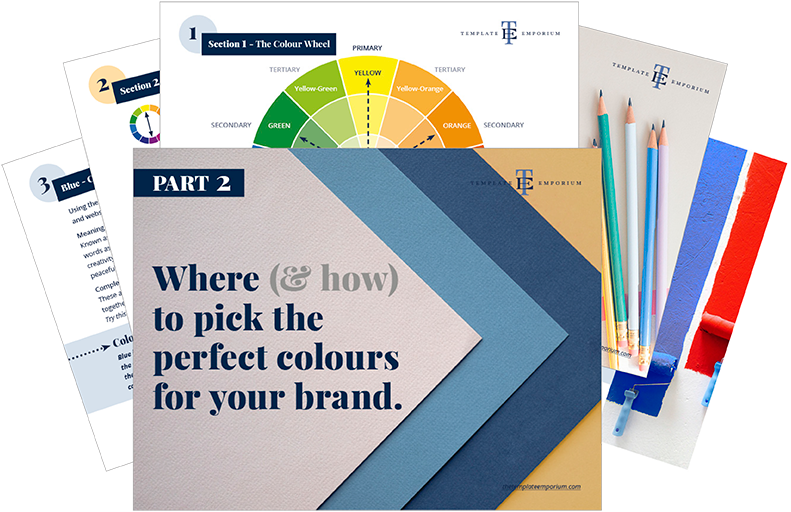
Step 1
Pick the Main Brand Colour
This is the type of Red you have chosen, is it light, bright or dark?
Step 2
Pick a Support Brand Colour
This colour creates harmony with the MAIN. Use the tips from Red & The Colour Wheel and the Colours that go with Red to help you decide.
Step 3
Pick a Light Neutral Brand Colour
This is for balance.
Not sure which one to pick? Download our guide below and go to page 16.
Step 4
Pick a Dark Neutral Brand Colour
Again this helps create balance.
Our guide will explain how to do this, download and head to page 16.
Step 5
Pick an Accent Colour
Used this sparingly to make something on your website pop.
This time head to page 22 of our free guide.
Web and Print Branding
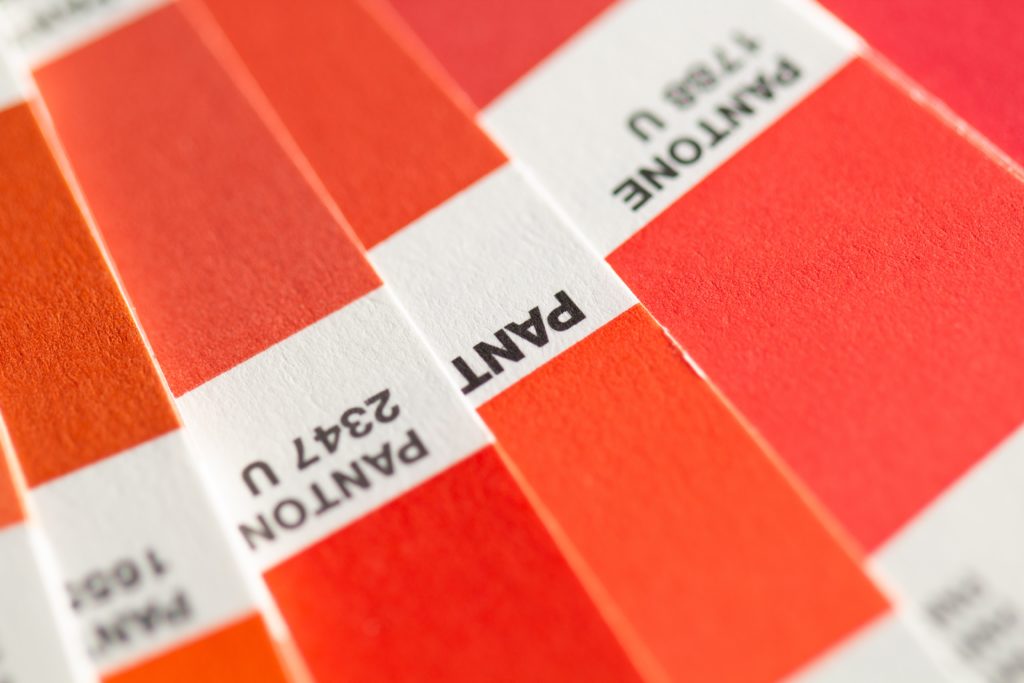
Once you have picked the right Red for your business, add the hex code to your website.
View how it looks on both desktop and mobile. To create consistency only, use the one hex code number to ensure the Red you chose is always the correct shade.
For print, instead of a hex code, you will need the CMYK (Cyan, Magenta, Yellow & Black) or Pantone, colour breakdown to ensure the Red will print out the way you want.
When not to use Red in your Branding
What’s your industry?
One of the common emotions people associate red with is danger, warning or fear. If your business is a medical speciality, such as a dentist, avoid red in your branding as it could be associated with pain (and blood!) and, that’s the last thing you want your patient feeling.
Red Branding and your website
Using complete blocks of red on your website could be jarring to your viewer’s eyes, and make it hard to read. From this, the viewer may suffer a bad user experience of frustration and aggravation.
Instead, use it as an accent colour and try shades, tints or tones of red to soften the effect and introduce other colours for overall balance. And, using it as a CTA (Call to Action) button always grabs your viewer’s attention.
Red Colour Combinations
Some colour combinations are so iconic, that it’s hard not to think of the original brand or event associated with it.
Red and Green
If not used correctly, this colour combination may appear more Christmasy than you like. You can prevent this by introducing tints, tones and shades to create a balance between the two.
Red and Yellow
This colour combination is very popular with major fast-food outlets. It has become so familiar to us that customers may question why you’re trying to look like McDonald’s!
To avoid this, use different varieties, shades, tints and tones of Red and Yellow.
You Did it!
That’s a wrap on Should you use Red as your Branding Colour?
How do you feel about Red now? Have we changed your mind and you’re ready to join Team Red? Let us know. And in the meantime, follow us on Pinterest for more blog posts like this.
Where to now?
- Download Where (& how) to pick the perfect colours for your brand
- Want to try Blue as your Branding Colour? Visit Here.
- Don’t miss out on our latest addition Year at a Glance Wall Calendar
Don’t forget to download our FREE Colour Guide.

Like the Blog Post?
PIN IT FOR LATER. And for more helpful tips follow us on PINTEREST.
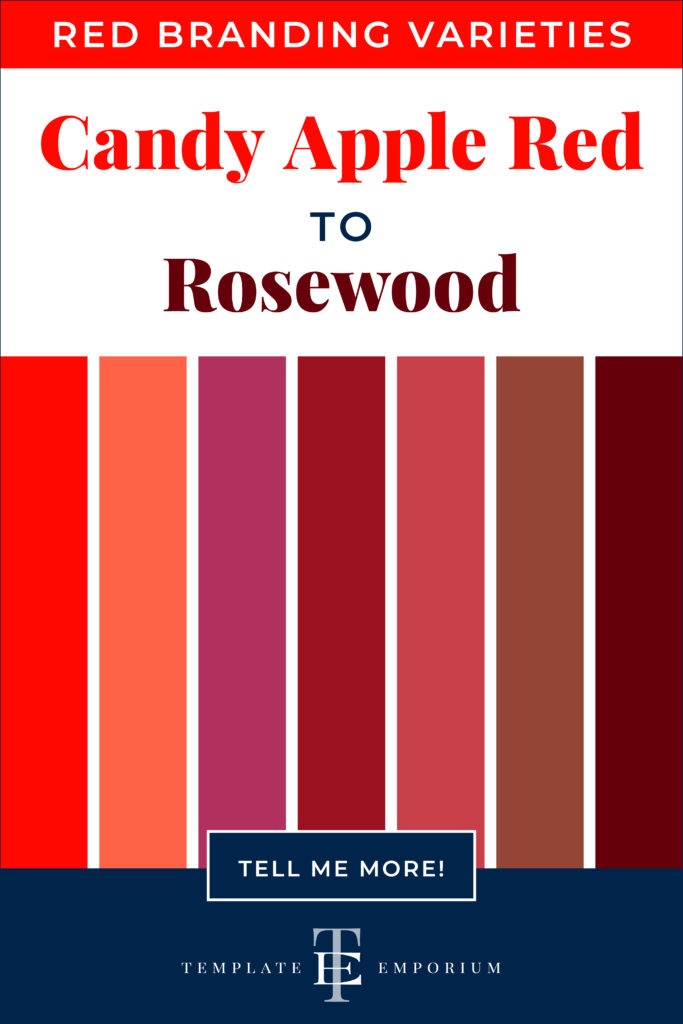
Search
Create & launch your website in a
few simple steps
FREE GUIDE
While you’re here,
grab our FREE
‘Do’s & Don’ts of what to add to your website’ Guide.
‘Do’s & Don’ts of what to add to your website’ Guide.
When you sign up, we’ll send you
emails with additional helpful content.
About Lavinia & Tom
Hi, we're so glad you found us.
We love helping creatives like you finally have the website you’ve always wanted.
Blog Categories
Follow us
